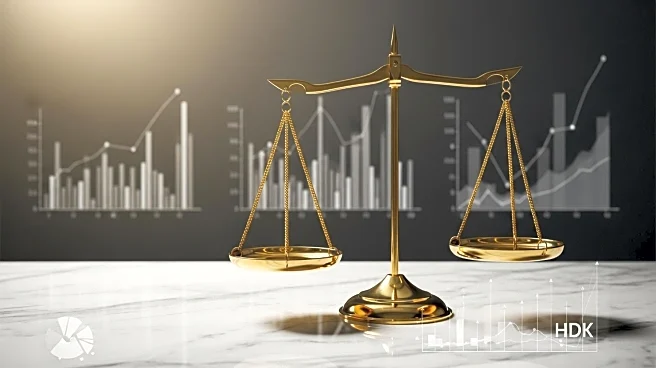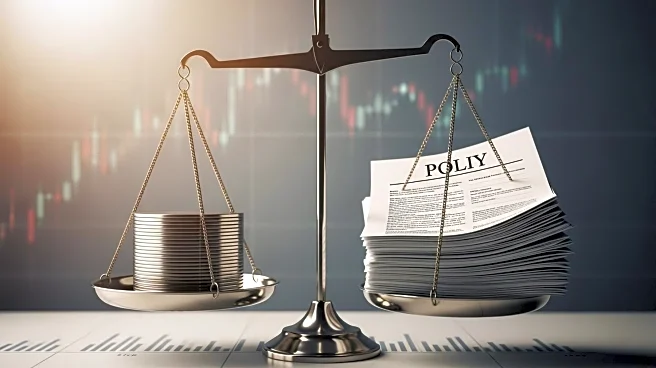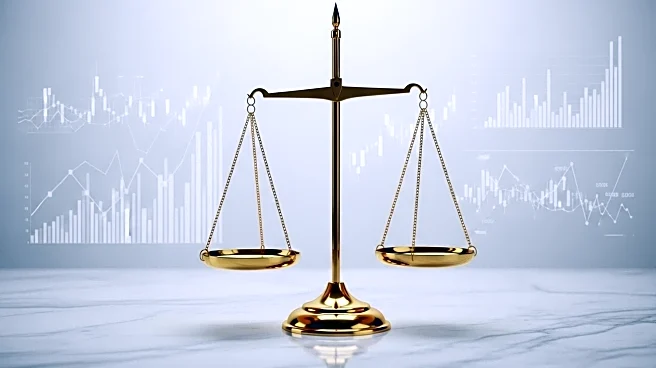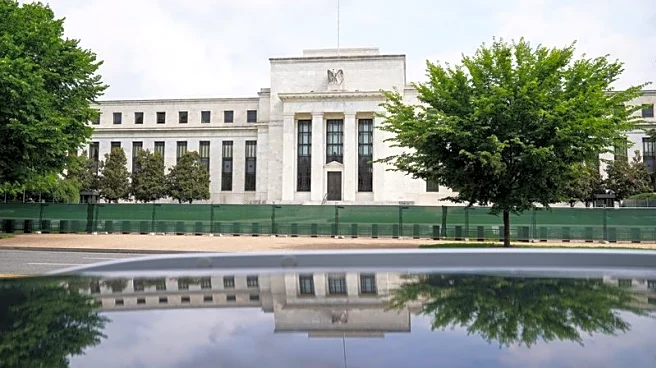What's Happening?
The Federal Reserve is currently evaluating the potential need for interest rate cuts in response to a U.S. economy that is experiencing stabilizing growth but ongoing uncertainty. Inflation remains a concern, with a year-over-year increase of 3.1% as of July 2025. The labor market is showing signs of weakness, highlighted by the addition of only 22,000 jobs in August 2025, significantly below the expected 75,000. The unemployment rate has risen to 4.3%, marking a five-month high. These developments are partly attributed to President Trump's aggressive tariff policies, which have disrupted supply chains and reduced business confidence, particularly affecting the factory and construction sectors. The Federal Reserve faces a complex decision-making process as it considers whether rate cuts are necessary to address these economic challenges.
Why It's Important?
The potential rate cuts by the Federal Reserve are significant as they could impact various sectors of the U.S. economy. Lower interest rates might provide short-term relief to financial markets, particularly benefiting equities and high-yield bonds. However, the decision also carries risks, such as potentially exacerbating inflation, which remains above the Fed's 2% target. The labor market's fragility, compounded by President Trump's tariff policies, adds another layer of complexity. The Fed's decision will be closely watched by investors and could influence asset allocation strategies. Additionally, the central bank must balance its dual mandate of price stability and maximum employment while maintaining its independence amid political pressures.
What's Next?
The Federal Reserve's upcoming meeting in September 2025 is a focal point for investors, with a high probability of a 25-basis-point rate cut being priced into the market. The Fed's decision will likely set the tone for future monetary policy and could have significant implications for economic stability and investor confidence. If inflation persists at current levels, the Fed may face renewed pressure to adjust rates, potentially leading to a volatile economic environment. Stakeholders, including businesses and policymakers, will be monitoring the situation closely to assess the impact on the broader economy.












